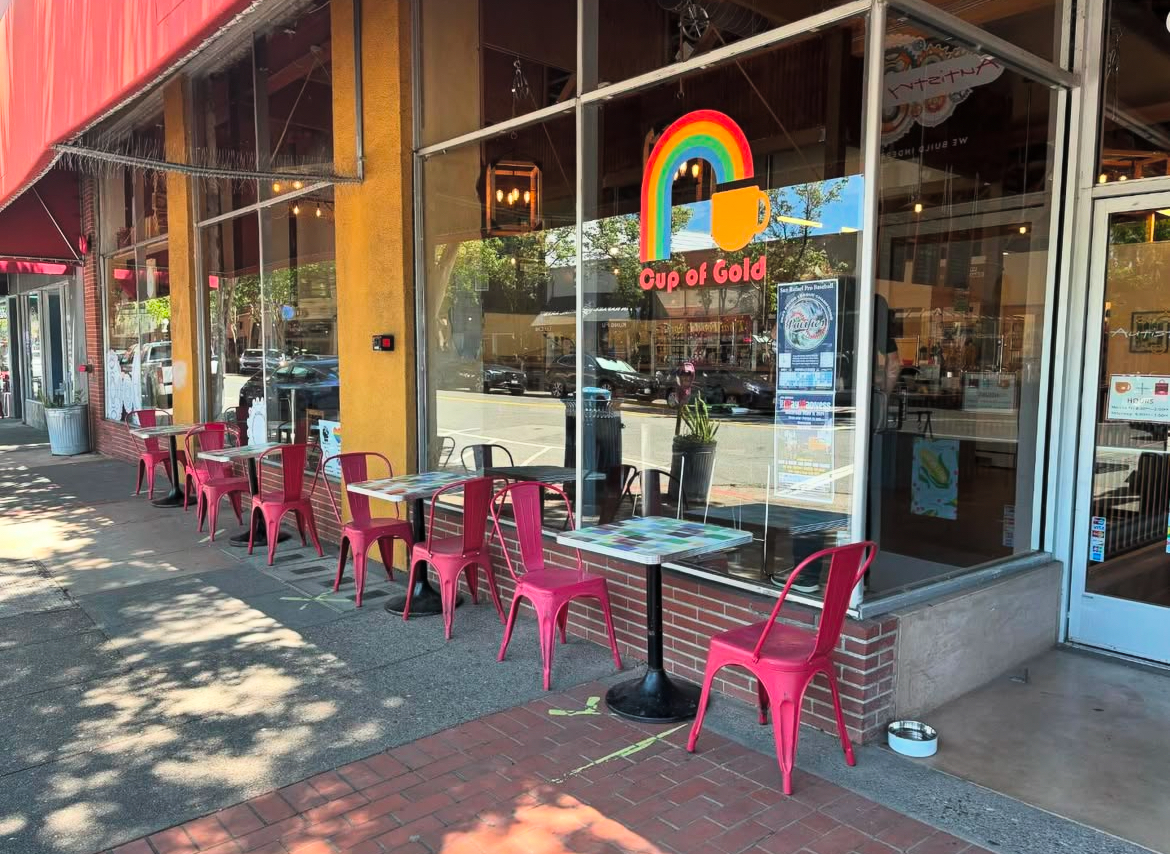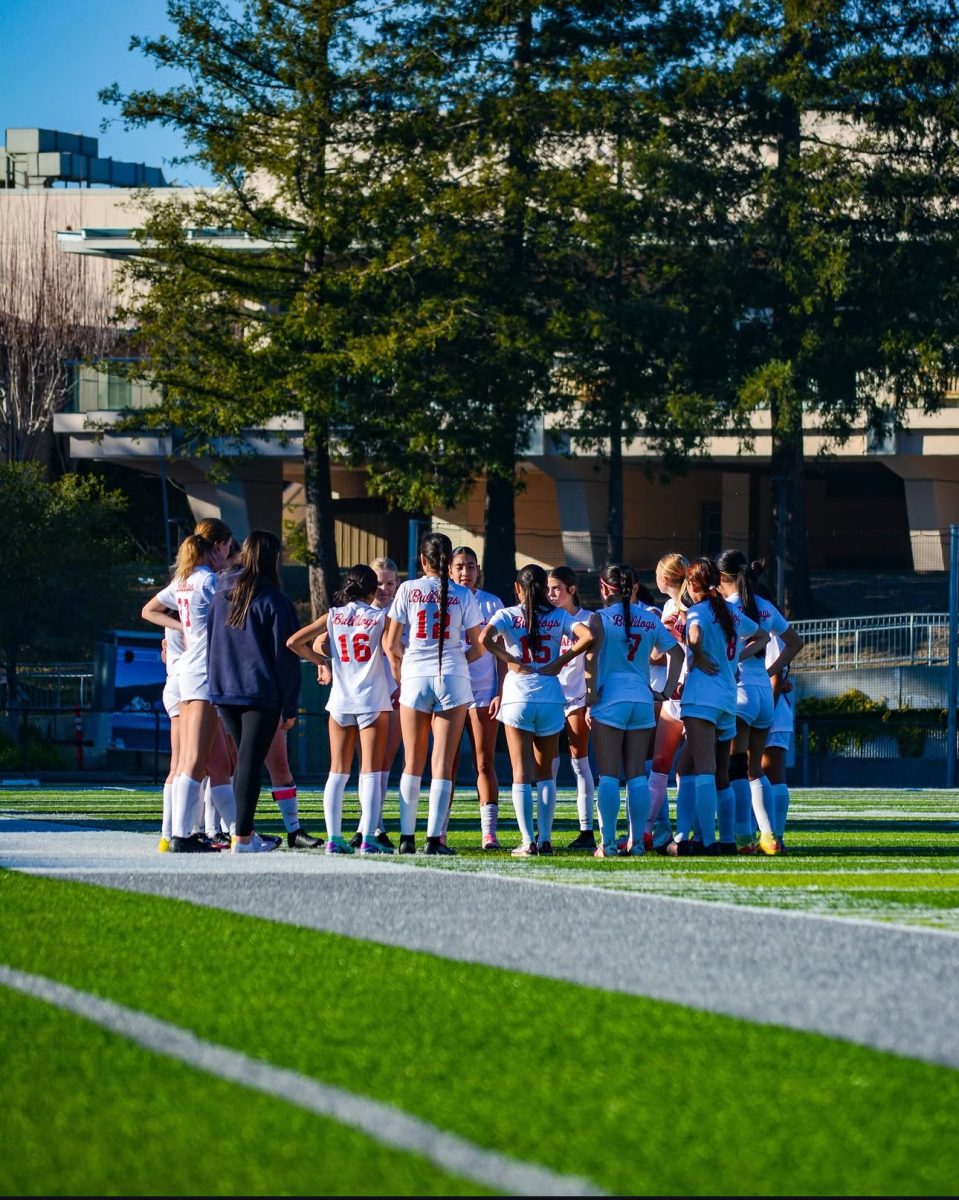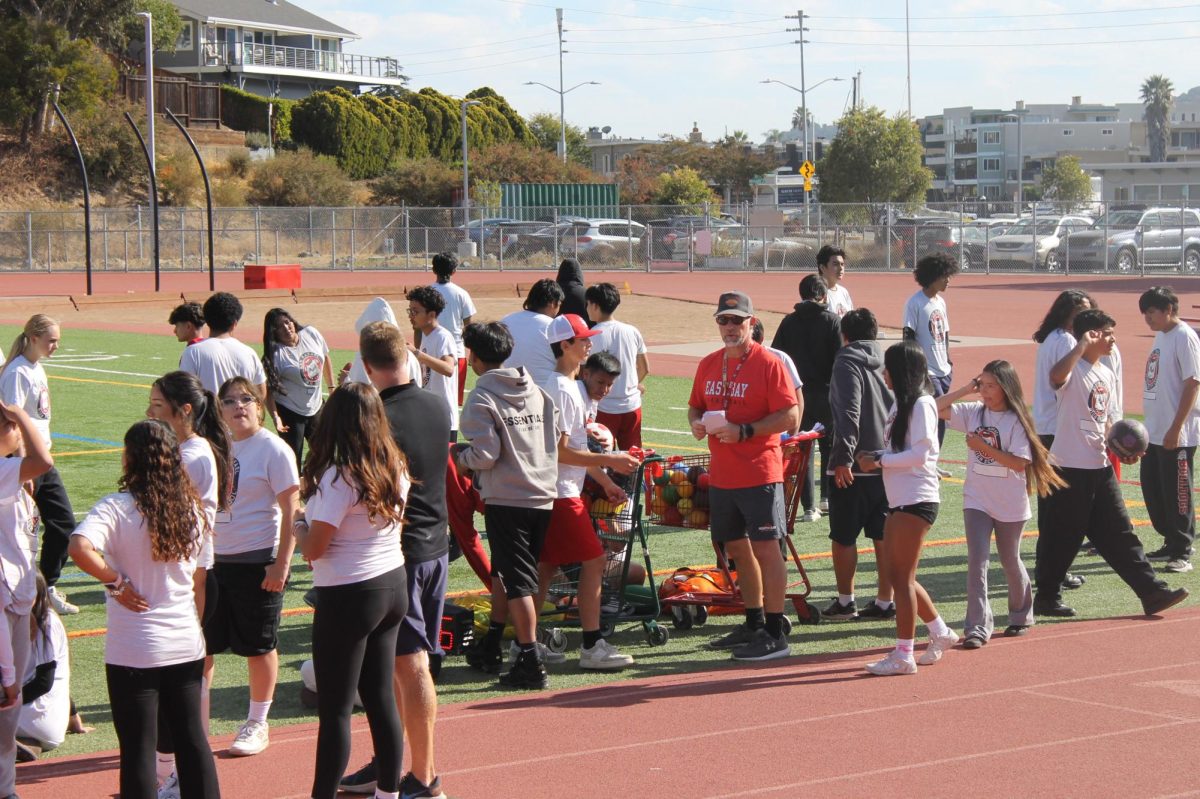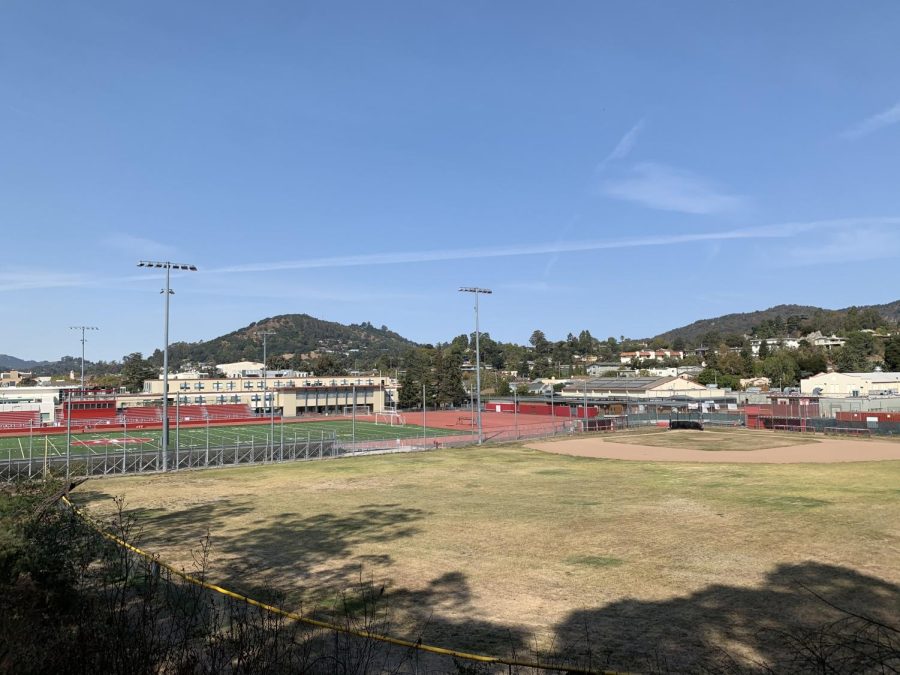As Water Runs Dry, SRHS Conservation Efforts Offer Refreshing Hope
October 9, 2021
The dull brown blades of grass on the San Rafael High School baseball field appear lifeless next to the other school fields, their bright, green, and artificial neighbors. In early July 2021, Marin County was added to the list of California counties recognized as being in a drought emergency. From there, water usage restrictions have only tightened.
In years past, significant droughts have become a new norm for Californians. Households, businesses, and public facilities are all too familiar with the rigid set of rules that are drought water rationing.
It is no surprise that these same restrictions find their way into the San Rafael High School campus. Along with everyday water usage such as plumbing, San Rafael High School facilities require a surplus of water to maintain. Both at school and at-home, each member of the San Rafael High School community has a significant water usage footprint.
“I am unsure about the future,” said Dave Pedroli, Director of Facilities, Maintenance & Operations for San Rafael City Schools.
Pedroli oversees all maintenance and facility work that happens in the physical schools of the San Rafael City School District. His work includes directing turf management, custodians, and, to no surprise, water management. It is his job to keep a close watch on the school’s water flow to ensure that the school doesn’t face fines or shut-off.
According to Pedroli, just one night watering the grass soccer field on campus can use around 9,000 gallons of water. “It’s a tremendous amount,” he said. Pedroli also estimates that the 250,000 gallon swimming pool loses close to 1,000 gallons per week due to evaporation alone.
For this reason, it is no surprise that Pedroli speaks very highly of San Rafael’s new turf field. “It could’ve been 200,000 gallons a month out there,” he said when asked about the impact of our newly established turf facilities. Because turf does not require watering, replacing other areas of traditional grass with artificial turf would save the school large amounts of money and resources.
The school, like the rest of the county, has been restricted to just one day of watering per week. Any other watering has to be done by hand using a hose with an automatic shutoff valve such as a spray nozzle. Drip irrigation can also be used, however no water runoff is allowed.
When questioned about the success of San Rafael High School’s conservation efforts, Pedroli said, “We are doing well. Everybody is paying attention, and I haven’t found anybody abusing anything.” However, he made it clear that there is still a lot of potential for improvement.
A lot of this potential can be found in the creation of new facilities on campus. California code requires newly built structures on campus to meet several water-saving specifications. Low flow plumbing systems are one of the many ways that water is conserved in a school environment, and they are not the only way technology of the future could impact how water is saved and used on campus.
The district has recently invested in intelligent sprinkler systems that have the ability to recognize weather conditions and water accordingly. If it were to rain, these smart sprinklers would recognize that much less water is needed for irrigation. The smart system also has the ability to look at the interaction between temperature and weather. If it were to rain in hotter weather, the system would recognize that water will still be needed the next day. If it were to rain on a colder day, the system would recognize that water might not be needed as it is less likely to have evaporated.
Along with new conservation technology, converting traditional landscaping on campus to “Zeroscaping,” such as rocks and turf, is something that Pedroli says is already in the works. “There is a tradeoff,” acknowledged Pedroli. Getting rid of grass and plants that consume high amounts of water would also mean less naturality on campus and less oxygen released into the atmosphere. Zeroscaping would further cut down on San Rafael High’s water output.
Campus water usage is just one piece of the pie. San Rafael High School is home to around 1,400 students and faculty members that also consume water in their at-home lives.
“Water is definitely something that I am conscious of,” said SRHS senior Kia Majidi. “Everyone in my household really makes an effort to save whatever water we can.”
Majidi collects all of the excess water that he uses in a large bucket and redirects that water straight to the garden. Because of this, he and his family are able to use less water for watering purposes and reduce their overall water consumption.
As for those who abuse water and don’t abide by restrictions, junior Andreas Ritter has little patience. “It bothers me,” he said. “But these selfish people have always existed in our society.”
As for the community as a whole, Dave Pedroli remains confident. “I don’t believe students or staff are wasting water,” he said. “Everyone is doing a good job.” Pedroli also added that coaches, teachers, and administrators have been very understanding and cooperative about the tightened water restrictions.
Pedroli is also staying prepared for what the future of this drought might bring. “If the drought gets worse, we may go to recycled water,” he said. This option would mainly supply water for irrigation purposes. The upper Terra Linda High School field uses 100% recycled water, which means that there is no restriction on when the field can be maintained.
Clearly, water conservation is high on the list of priorities for both San Rafael High students and staff. It has become a norm for the members of our community to embed water-saving routines and tendencies into their everyday lives.
All of the effort possible may be needed in the future to deal with worsening drought conditions and tightening water restrictions. Regardless of what the future may hold, it would appear that water is in good hands with the San Rafael High School community.






































